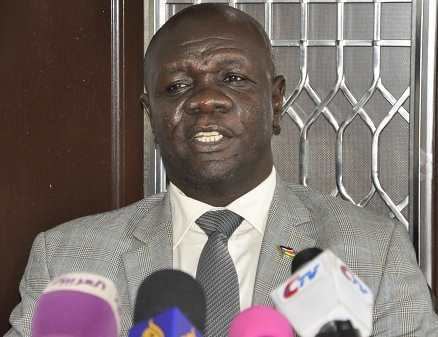You are here: Home | Featured | Humanitarian | News | Bandingilo National Park: Gov’t to re-settle Mangala IDPs

Rizik Zacharia, the Minister of Wildlife Conservation and Tourism. | Courtesy.
Plans are underway to relocate IDPs in Mangala to an unnamed location within Central Equatoria state as the current camp is adjacent to Bandingilo National Park.
This is according to the Minister of Wildlife Conservation and Tourism, Rizik Zacharia.
Bandingilo National Park is located in Mangala County in Central Equatoria.
Rizik says he is working with the Central Equatoria State Government to relocate the IDPs in Mangala away from the park.
“We are coordinating with the Central Equatoria State Government to find them a solution to IDPs, it seems the state government of Central Equatoria has developed plans to re-accommodate them,” Rizik said.
He pointed out that any encroachment and interference by humans will affect biodiversity.
Rizik says his mission as a minister is to preserve and conserve the protected areas.
“My mission is to preserve and conserve the protected areas. But the issue of IDPs is prerogative of the states of Jonglei and Central Equatoria,” he said.
“The protected areas were meant for the conservation and management of the wildlife species; any encroachment and interference from humans will affect the biodiversity.”
He says the encroachment of IDPs in Bandingilo and Nimule game reserves is affecting biodiversity.
“This is happening not only in Bandingilo in Mangala but it’s happening in Nimule where there is encroachment. There are a lot of disturbances and other human activities in Boma.
“It is our responsibility as the ministry of wildlife to reform and address these challenges.”
The Mangala IDP camp was established nearly a year ago to temporarily host IDPs who fled an unprecedented flood in Jonglei State.
The camp is now home to more than 96,000 people, mostly women and children.
The park covered the erstwhile states of Central Equatoria and Eastern Equatoria. It was established in 1992.
Situated in a wooded area near the Nile River and it covers over 10,000 square kilometers of land.
South Sudan is ranked world’s second-largest annual animal migration after Serengeti in Kenya and Tanzania.
It involved multiple species of Antelope including Reedbuck, Tiang, and White-eared Kob, takes place in the park, which is also home to iconic African megafauna like the Nubian giraffe.
It also contains large marshlands stretching up into Jonglei state.
Support Eye Radio, the first independent radio broadcaster of news, information & entertainment in South Sudan.
Make a monthly or a one off contribution.
Copyright 2024. All rights reserved. Eye Radio is a product of Eye Media Limited.